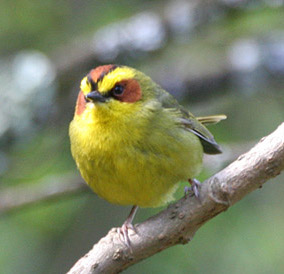State of Mexico

Birding Mexico State
Mexico State or State of Mexico (often abbreviated to “Edomex”, from Estado de México in Spanish) is a state in the centre of the nation of Mexico. The state’s capital is the city of Toluca.
The State of Mexico is located in the central part of the Mexican Republic with an altitude that varies from 1,330 meters above sea level to 2,800. The state has a surface of 22,499.95 km2 (8,687.28 sq mi), which represents 1.1% of Mexican territory. Its total surface is 22,499.8 square kilometres (8,687.2 sq mi). It is used for agriculture, forest and livestock. 14% of the territory is urban, water and industrial zones.
Biospheres – The state is characterized by large plains divided by mountain ranges. To the north is a dry region called “Los Llanos”, with vegetation such as mezquites and paddle cactus. In this region there are oak trees and holm oak like in Cuzdha and El Rosal in the municipality of San Miguel Calpulalpan. Toluca and Lerma are in the central valleys, where industrial parks are the source of income. In the surrounding hills, the vegetation consists of pines and oaks. There are white cedars at the National Park of Bancheves. Ocotes, that are aromatic resins, are very common in El Oro, a municipality located in the north-east part of the state. In the central valley are industries and cultivated lands. In the lower, warm elevations to the south, the vegetation is tropical. Here are found guajes (fruits of climber), papelillos (trees whose crust is withdrawed by itself), acacias, palo de Brasil (red tree), guacima (small tree with rounded crown) and amate(tree whose bark is used to paint or write)
Mountains & Valleys – The state is divided into two unequal parts: the cross-sectional volcanic axis, which is formed by peaks, the Mountain Range of Queretaro and Hidalgo, and the Sierra Madre del Sur, which is formed by the depression of the Balsas River, in addition to valleys which begin in Guerrero. Inside this system are included the Sierra de Ajusco and Montes de las Cruces, which form a wooded ridge across it from east to west, with a general elevation of about 3000 meters above sea-level. These ranges are part of a broken irregular chain which sometimes bears the name of Anahuac.The most important summits are the “Sierra Nevada”, the “Sierra de las Cruces”, “Nevado de Toluca” and the significant valleys are Toluca-Lerma and Cuautitlan- Texcoco
Lakes and rivers – A considerable part of the northern plateau consists of a broad plain, once the bed of a great lake but now covered with swamps, sodden meadows and lakes. The surrounding country drains into this depression, but an artificial diversion of this water has been created by the opening of the Tequixquiac tunnel. The plateau drains westward to the Pacific Ocean via the Lerma River which has a surface of 6,147.49 km2 (2,373.56 sq mi), and north-east to the Gulf of South of the Sierra de Ajusco. The state is roughly mountainous and drains to the Pacific through tributaries of the Balsas River that has 8,372.14 km2 (3,232.50 sq mi). It drains to the Gulf of Mexico through the San Juan and Panuco river that has a surface of 7,980.3 km2 (3,081.2 sq mi). Within the depression of the north are the lakes of Zumpango, San Cristobal, Xaltocan, Chalco, Xochimilco and Texcoco, the latter three lying partly or wholly in the Federal District.
Weather – The most common climates in Mexico State are tempering-humid and tempering sub-humid. 60% of the State has these type of climates. In the highest mountains, the weather is cold.
The annual average temperature in the south-east is about 20 °C (68 °F), and in the north is about 13 °C (55 °F). The annual rainfall is between 600 and 1800 mm.] The weather can variate a lot from one season to another. In the summer, it is very warm but during winter, the temperature can be lower than 0 °C (32 °F). It can snow in Mexico
-
Wikipedia
GNU Free Documentation License
http://en.wikipedia.org/wiki/México_(state)
-
ecoTOURS
Tour Operator
